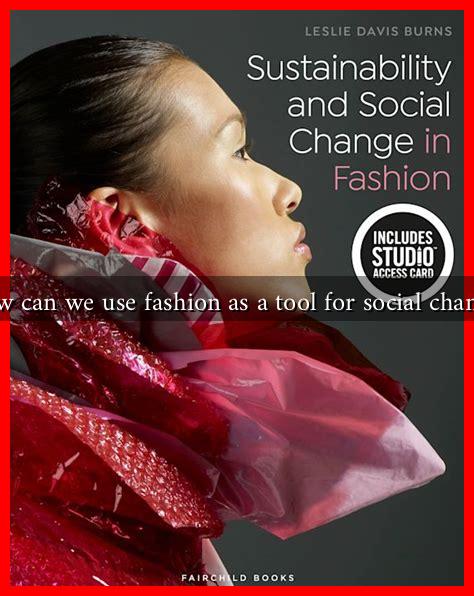-
Table of Contents
How Can We Use Fashion as a Tool for Social Change?
Fashion is often seen as a superficial industry, focused on aesthetics and trends. However, it has the potential to be a powerful vehicle for social change. By leveraging the influence of fashion, designers, brands, and consumers can address pressing social issues, promote sustainability, and foster inclusivity. This article explores how fashion can be utilized as a tool for social change, highlighting key examples and strategies that have made a significant impact.
The Power of Fashion in Advocacy
Fashion has a unique ability to communicate messages and evoke emotions. It can serve as a platform for advocacy, raising awareness about social issues and inspiring action. Here are some ways fashion can be used for advocacy:
- Awareness Campaigns: Fashion brands can create collections that highlight specific social issues, such as gender equality, racial justice, or climate change. For instance, the brand Patagonia has been vocal about environmental issues, using its platform to advocate for sustainable practices.
- Collaborations with Activists: Collaborating with activists and organizations can amplify the message. The collaboration between Burberry and the charity organization “The Prince’s Trust” aimed to support young people in the UK, showcasing how fashion can contribute to social causes.
- Fashion Shows as Platforms: Fashion shows can be used to promote social messages. The 2018 New York Fashion Week featured models wearing T-shirts with slogans supporting the #MeToo movement, demonstrating how fashion can be a form of protest.
Promoting Sustainability through Fashion
The fashion industry is one of the largest polluters in the world, contributing to environmental degradation and climate change. However, it also has the potential to lead the way in sustainable practices. Here are some strategies for promoting sustainability:
- Ethical Sourcing: Brands can commit to sourcing materials ethically, ensuring fair labor practices and reducing environmental impact. Companies like Eileen Fisher focus on sustainable materials and fair labor practices.
- Upcycling and Recycling: Encouraging consumers to upcycle or recycle clothing can reduce waste. Brands like Reformation promote sustainable fashion by creating stylish pieces from recycled materials.
- Transparency: Brands that are transparent about their supply chains and production processes can build trust with consumers. The Good On You app rates brands based on their sustainability practices, helping consumers make informed choices.
Fostering Inclusivity and Diversity
Fashion has historically been criticized for its lack of diversity and inclusivity. However, there is a growing movement within the industry to embrace all body types, ethnicities, and genders. Here are some ways fashion is fostering inclusivity:
- Diverse Representation: Brands are increasingly featuring models of different sizes, ethnicities, and ages in their campaigns. For example, Ashley Graham, a plus-size model, has become a prominent advocate for body positivity in the fashion industry.
- Adaptive Fashion: The rise of adaptive fashion has made clothing accessible for individuals with disabilities. Brands like Zappos offer adaptive clothing lines that cater to diverse needs.
- Community Engagement: Engaging with local communities and supporting marginalized groups can create a more inclusive fashion landscape. Initiatives like Fashion for Good work to empower communities through sustainable fashion practices.
Conclusion: The Future of Fashion as a Catalyst for Change
Fashion is more than just clothing; it is a reflection of our values and beliefs. By harnessing its power, we can drive social change, promote sustainability, and foster inclusivity. The examples highlighted in this article demonstrate that the fashion industry is evolving, with many brands and individuals committed to making a positive impact. As consumers, we also play a crucial role in this transformation by supporting ethical brands and advocating for change. Together, we can use fashion as a tool for social change, creating a more equitable and sustainable future.


